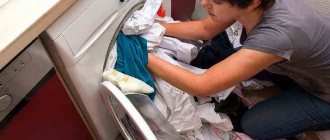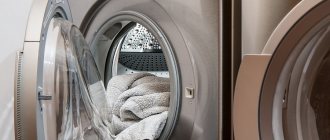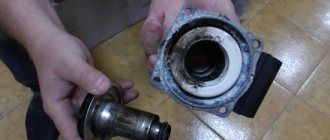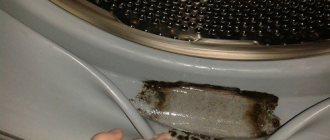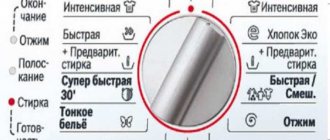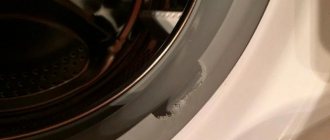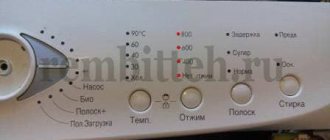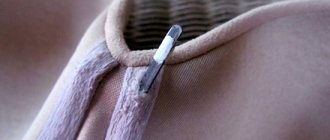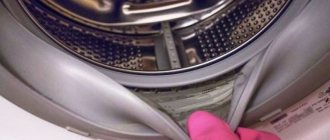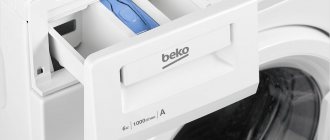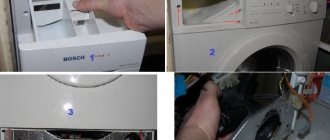In order for the washing machine to last a long time and operate smoothly, it is necessary to handle it correctly. It is mainly important to know where to put the powder in the washing machine and where to add the bleach, stain remover and conditioner.
All modern washing units are equipped with trays designed for storing detergents. However, the chemical industry offers different compositions for washing, both in the form of powders and liquids. There are also special-purpose products: stain removers, bleaches, rinses and others. And often we cannot immediately figure out which compartment of the tray is intended for what.
What types of detergents are there and what are they for?
The range of household chemicals stores is wide and varied, and counters with laundry detergents are full of a huge number of bright boxes and bottles. How to figure this out? The main types of washing compositions can be distinguished:
- powders (intended for main wash);
- compositions in the form of liquids (washing gel, rinse aid, stain remover and fabric softener);
- tablets and capsules (contain concentrated compressed laundry detergent or gel).
Whatever product you use, pay attention to the amount of foam formed. If there is too much of it, this indicates that the dose of the substance has been exceeded and needs to be adjusted. Typically, these recommendations can be found on the packaging of the powder or gel.
It is also important to choose products marked “automatic” for machine washing and pour or pour the selected composition only into the appropriate compartment of the tray.
What does the washing powder tray look like and where is it located?
In different models, the container for powders and liquids is located differently. If your washing machine has a vertical loading of laundry, then this compartment will be located on the inside of the hatch; in front-facing machines it is located on the front or rear panel.
The tray consists of 3 parts of different sizes, each of which is marked with icons (different models may have different markings). When loading detergents, you need to focus on these indicators. So what does the tray look like? When you open it, you will see the following:
- the widest compartment is marked with B, "2" or II;
- the medium-sized part of the compartment is designated by the letter "A", the Arabic numeral "1" or the Roman I;
- the smallest part of the container is indicated by an asterisk or a flower, and may have the inscription Softener.
Once you've found the tray and examined it, it's time to figure out which part is for which products.
Rules for using detergents
Most often, modern units use powdered products with different compositions. They can be fully or partially synthetic, concentrated, made from soap or herbal extracts, but their packaging must be labeled “for automatic washing.”
Where should I put my laundry detergent?
It is strictly not recommended to use preparations for manual treatment of laundry: they cause strong foaming, which can lead to clogging of the hose and, as a result, to leaks.
Powder is poured into different types of washing devices in different ways. Semi-automatic machines usually do not have a separate cuvette for detergents; the powder is poured into the tank along with the laundry.
In machines with vertical loading, the cells for washing powder, conditioner and other products have larger parameters than in front-loading machines.
In machines with vertical loading, the cells for powder, conditioner, and bleach are located on the inside of the hatch located at the top.
Image gallery
Photo from
Washing machine Indesit EWD71052CIS
Washing machine Hotpoint AristonAQS1D
Washing machine Bosch WAW32540OE
Washing machine Whirlpool AWE6516/1
For front washing machines, the detergent compartment is usually located in the upper left corner. Depending on the brand, its design may vary.
Let's take a closer look at the design of the powder tray. The retractable cuvette, designed to bring detergent into the drum, has a well-thought-out device. As a rule, it is made of plastic: the front panel is the color of the body, and the inner surface is white or gray.
This figure shows a schematic representation of a standard compartment for receiving detergents, consisting of three cells of different sizes
The device is divided into three, less often into four compartments, which are marked with letters, symbols, Roman or Arabic numerals:
- The largest module , designated by numbers II, 2 or letter B , is filled with the product necessary for the main washing cycle.
- The compartment is medium in size , marked with the numbers I, 1 or the letter A , designed for filling with washing powder, which is used for pre-washing clothes. You can also add bleach or stain remover here.
- The smallest compartment , which is usually located on the left, is intended for filling flavors and conditioners. This part can be marked with the numbers III, 3 , the word Softener , and the image of a flower (star).
To regulate the amount of softening agent, a limit strip with the word "max" is often applied to the conditioner compartment, indicating the limit limit.
In some models, for example, in Samsung machines, a special dispenser included in the kit is used to apply liquid products. It is inserted into the corresponding compartment of the cuvette
In some cases, this compartment is divided into two parts by a partition, and a removable module can also be used. One of them is intended for the conditioner itself, the second for diluted starch, flavoring or other additional substance.
Rules for loading detergent
The powder is poured into the cuvette randomly; it is not at all necessary to distribute it evenly throughout the entire container: the main thing is that it does not spill out over the edges. After the manipulation, you need to close the compartment tightly, and only then start the machine.
When selecting a prewash/main wash and rinse with fragrance and softener, all products can be added to the cuvette at the same time
Some washing machines have levels in the cells that allow you to control the amount of detergent added. However, housewives often pour the powder by eye, remembering the amount from previous washes.
The design features of the machine ensure that detergents (powder, conditioner) enter the drum along with the flow of water supplied through the tray. Each compartment has holes that create conditions for dissolving these products with a stream of water and transferring them to the tank.
Where to put powder in the washing machine
If the markings on the machine are not visible, you can use the dimensions of the tray compartments as a guide. You need to pour washing powder into the machine into a larger tray marked “B”, “2” or II. Liquid compositions or cleaning solutions in the form of shampoos cannot be poured here.
Options for loading washing powder into automatic machines from different manufacturers: photo instructions
If you correctly study the design of trays in modern washing machines, understanding the method of loading detergents is not so difficult. However, to make it easier to find the right compartment, our editors offer visual instructions with photos for each individual brand of popular automatic washing machines.
Features of the structure of the trays in the Indesit washing machine: where to pour the powder into them
Most modern washing machines from the Indesit brand have three compartments for storing detergents. The widest tank, indicated by the arrow, is intended for dry powder or liquid detergent for the main wash cycle.
Where to put powder in an LG washing machine for the main washing function
In washing machines of the LG brand, the placement of trays is individual, for example, the compartment for placing rinse aids or conditioners is located right in the depths of the pre-wash tank. But you need to pour powder for regular washing of things into the compartment with icon II, as shown in the photo.
Where to put washing powder in a Samsung automatic machine?
Regardless of the model of Samsung washing machines, the internal structure of the detergent tanks is practically the same. Take a look at the photo where to correctly send the powder for the main washing cycle. If you are using liquid products or capsules, they must be placed directly into the drum.
Helpful information!
If you hold the tray open for a few minutes while the wash is running, you will see where the water is collected first, and accordingly, you will be able to determine where to send the powder.
In which compartment of the Bosch washing machine should I pour pre-wash powder?
In the previous section, you have already become familiar with the methods of marking trays for detergents. If you need to thoroughly wash laundry or remove stains from children's clothing, you need to start the pre-wash mode, respectively, pour washing powder into the compartment marked (I), see photo.
Is it possible to pour powder directly into the drum?
Disputes on this issue between housewives have not subsided for a long time. Women's opinions were divided. Some argue that putting powder directly into the drum will help save detergent without in any way affecting the quality of cleaning things. In other words, the detergent composition immediately reaches the laundry without passing through the unit, which allows it to be used in smaller quantities.
Others argue that the savings are mythical. Since most of the product is washed out with water, which is poured and drained into the drum several times during the washing cycle, the powder does not have time to foam and remove dirt from the clothes. Therefore, some housewives consider this method of backfilling to be ineffective, allowing its use only in a situation where the tray is broken or cannot be used for other reasons.
Whether it is worth pouring powder into the drum is up to each housewife to decide for herself. But whatever filling method you choose, use only automatic washing powders and follow the recommended dosage of the product.
The machine does not take powder from the tray
Yes, you can pour the powder into the washing machine drum, but don’t rush - it’s unsafe and useless. It is much more effective and cheaper to purchase a special dispenser in the form of a plastic jar with numerous holes in the lid. The container is easy to fill, fits inside the machine and optimally replaces the powder receptacle due to several advantages:
- the laundry does not come into direct contact with cleaning chemicals, which protects the fabric from the negative effects of concentrates;
- a scale applied to the jar helps to measure the required amount of powder;
- the holes control the flow of detergent into the water, which allows the powder to be evenly distributed throughout the entire wash cycle;
- the drum remains clean due to the gradual dissolution of the product.
Important! No dispenser can completely replace a powder receptacle and is used only as a temporary alternative. In a half-empty drum, the jar creates additional noise and pressure, touching the walls and front glass at high speed.
In addition to powder products, this container is perfect for gels and conditioners. Therefore, it is not prohibited to place two cups in the washing machine at once. Moreover, such a device can be made independently: it is enough to cut about ten holes of different sizes on any plastic jar.
There is a reason why there is a special tray in washing machines. Gradual addition, gentle washing and gentle cleansing - all this allows you to make washing high-quality and safe. Therefore, it is important to use the powder receptacle correctly and for its intended purpose, and in the event of a breakdown, do not delay repairs and have harmless backup options.
Interesting:
- Where do you put the powder in the washing machine?
- Where to pour and how to use liquid powder
- Where to pour powder in a Kandy washing machine?
- Where to pour powder in a Gorenje washing machine
- Dishwasher powder - store-bought and homemade
- Where to put the powder in the Atlant washing machine?
Reader comments
- Share your opinion - leave a comment
Where do you put gel capsules or laundry tablets?
Not so long ago, laundry detergent compositions in the form of capsules or tablets appeared on the household chemicals market. The capsule, as a rule, contains the product in the form of a gel, while the tablet is a compressed powder that gradually, layer by layer, dissolves during the washing process.
Laundry capsules and tablets are placed in the drum along with the laundry. If you put them in a tray, they will not have time to dissolve completely while the laundry is being washed and the quality of cleaning will significantly decrease.
To ensure that your washing machine serves you for a long time and also cleans your laundry efficiently, follow the rules of its operation and you will free up a lot of time while your assistant deals with stains and dirt on things.
When do we add powder to the drum?
This measure is forced: it has to be resorted to if the detergent tray is damaged.
Do not add aggressive products (stain removers, bleaches) to the drum, as they can stain the fabric or even destroy the material. It is also not recommended to add powder containing multi-colored granules directly to the laundry, as they can leave marks. In this case, you should first find out whether the compartment really does not cope with the proper functions. This can be done simply: carefully inspect the item after washing. If residues of detergent are found in it, it means that it was not washed completely due to malfunctions.
[custom_ads_shortcode3]

